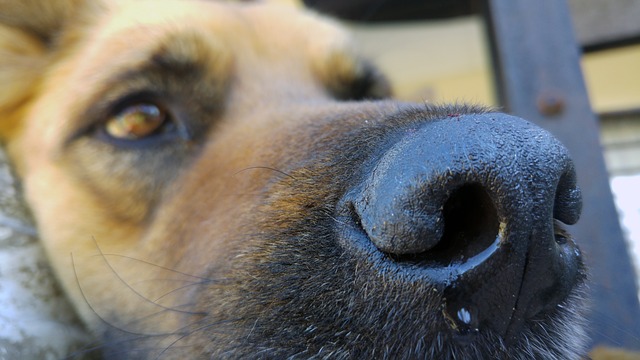Dog flu is making its rounds across the country, and the best thing dog owners can do is be prepared. Outbreaks have already spread through Washington, California, and Colorado, but dogs in every state are at risk of coming down with the flu. K-9 influenza is extremely contagious and cases range from mild to severe. Dogs who frequently spend time at dog parks and other places where they’re around other canines are most at risk. Veterinarians recommend owners be especially observant and look out for these six warning signs.

#1- Coughing: A persistent cough is one of the earliest signs of dog flu. The cough can be either wet-sounding or dry and sound like your dog is unsuccessfully trying to hack something up.
#2 – Sneezing: The occasional sneeze due to allergies or sniffing something especially disagreeable isn’t cause for concern, but a day full of sporadic sneezing points toward illness. Try to note what your dog was doing directly before he sneezed to help determine if it’s flu-related. Several seemingly random sneezes could be flu symptoms.
#3 – Nasal Discharge: Nasal discharge is often a result of sneezing, but when it’s the flu, the discharge will be constant—not only after a big sneeze. Clear discharge is usually harmless and is mostly related to allergies. Mucus that is cloudy, gray, green, or especially thick is a sign the body is fighting a more serious illness.

#4 – Eye Discharge: For some dogs, daily eye discharge is normal. If that’s the case for your pup, look for a noticeable increase in how often you have to clean their eyes and the general amount of discharge. Dog flu-related eye mucus is thicker and goopier than the everyday glob you easily wipe away.
#5 – Reduced Appetite: If dinner is usually your dog’s favorite time of day and they suddenly stop showing interest in food, something isn’t right. Occasionally refusing a treat or not finishing their dinner could be a simple stomach ache, but going 24 hours with little or no food is worth a call to the vet.
#6 – Lethargy: Some dogs prefer snoozing on the couch to being up and active, but too much sleeping could mean your pup’s body is being worn down by the flu. Look out for a noticeable decrease in activity and a general lack of interest in games and activities they usually enjoy.
#7 – Fever: The normal temperature for a dog is between 101 and 102.5 degrees Fahrenheit. Minor cases of the flu can cause slight spikes in temperature, while more serious instances can push the thermometer to dangerous heights. Animal Planet advises that a temperature of 104 or higher points to either dog flu or another kind of serious canine illness.

If you notice at least two of the symptoms on this list, experts recommend scheduling an exam with your regular veterinarian. Dog flu is rarely fatal, but in extreme cases dogs can develop hemorrhagic pneumonia. Veterinarians usually recommend cough suppressants and antibiotics to help dogs with mild cases, and Pet MD says the flu usually runs its course in 10-15 days. For the severe form of dog flu, the dog will need fluids, antibiotics, and other support treatments the veterinarian finds necessary. They’ll also require several weeks of rest and isolation. Ask your vet about the dog flu vaccine for extra peace of mind in keeping your pup safe.
(h/t: Animal Planet, Pet MD)
